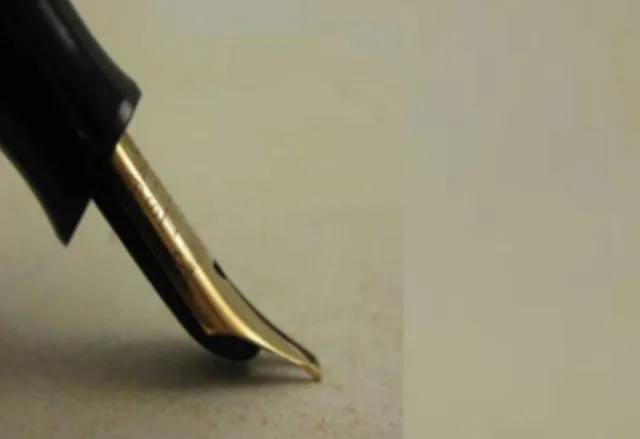In courtrooms worldwide, when a judge hands down the most severe sentence—capital punishment—there’s a lesser-known yet profoundly symbolic gesture that often follows: breaking the nib of the pen used to sign the death warrant. While it might seem like a simple act, the tradition of breaking pen nibs after sentencing someone to death carries deep meaning. People are just beginning to realize the full weight of this gesture and why it continues to be practiced in modern legal systems.
The Historical Origins of Breaking Pen Nibs After Death Sentences

The custom of breaking the pen nib after sentencing capital punishment dates back several centuries, with its roots most notably traced to India during the Mughal era. Historical records show that Mughal emperors would break their quills after signing death sentences. This gesture was meant to symbolize the finality of their decision, emphasizing that the fate of the condemned could not be altered once the sentence was signed. The broken quill served as a physical representation of the irreversible nature of the punishment.
As time progressed, British colonial rulers adopted this tradition, particularly in India’s judicial system. Even after gaining independence, the practice continued in Indian courts, with modern judges breaking their pens after sentencing individuals to death. The gesture has since spread beyond India, and though not a legal requirement, it has become a powerful symbolic act in many parts of the world.
Why Do Judges Break Pen Nibs After Sentencing Capital Punishment?
While breaking the nib of a pen may appear ceremonial or purely symbolic, it serves several important purposes, especially in the context of a death sentence.
1. The Irreversible Nature of Capital Punishment
One of the primary reasons judges break their pen nibs after imposing capital punishment is to emphasize the irreversible nature of the sentence. Once a death sentence has been signed, it cannot be undone. Breaking the pen marks this finality, symbolizing that the judge’s role in the matter is complete, and no further changes can be made.
For those present in the courtroom—family members, legal teams, and even the accused themselves—the breaking of the pen is a moment to reflect on the gravity of the situation. It underscores that a life is about to be taken, and the legal system has reached its most severe conclusion.
2. A Symbol of Emotional and Ethical Burden

Imposing a death sentence weighs heavily on judges. The responsibility of deciding someone’s life is not one that any judge takes lightly. Breaking the pen nib is a symbolic expression of the emotional toll that this decision carries. Legal experts, such as Indian lawyer Subhash Ahlawat, explain that this tradition represents the sorrow, regret, and inner conflict judges often feel when passing such a severe sentence.
Even though the law demands such a decision, many judges experience personal unease, as they may struggle with the morality of capital punishment. By breaking the pen, they acknowledge the burden of following the law, even when it conflicts with their personal beliefs. The act of physically breaking the pen becomes a tangible manifestation of their internal struggle.
3. Ensuring the Pen Is Not Used for Lesser Matters
Breaking the nib also symbolizes that the pen used to sign a death sentence should not be used for anything else. It marks the pen as an instrument of finality—one that should not be treated casually or used for trivial purposes. This further emphasizes the seriousness of the decision at hand. Once the nib is broken, the pen is rendered unusable, highlighting that its purpose was singular and absolute.
This action reinforces respect for the process of life-and-death decisions. The pen, in this context, is no ordinary writing tool; it becomes a symbol of the weighty responsibility that comes with determining someone’s fate.
4. Respect for the Finality of the Decision

The act of breaking the pen also serves as a public display of respect for the finality of the sentence. In many cultures, rituals and symbols help individuals cope with and understand significant events. Breaking the pen allows judges to outwardly demonstrate their awareness of the consequences of their actions and the gravity of their role in the legal system.
This tradition has been passed down through generations, and many judges and legal professionals believe that it is an essential part of the sentencing process. It is a moment for reflection—not just for the judge, but for everyone in the courtroom. It’s a way to pause and consider the enormity of what has just transpired.
5. A Topic for Ethical Debate and Reflection
Interestingly, as capital punishment becomes less common in certain parts of the world, such as in the United Kingdom and parts of Europe, the practice of breaking the pen nib has sparked more conversation. It has raised ethical questions about the role of the judiciary in carrying out final sentences and has reignited debates surrounding the morality of capital punishment itself.
In countries where the death penalty is still in use, the breaking of the pen remains a poignant and powerful gesture. It continues to remind us that, while the law may dictate the need for capital punishment, the human element—emotion, regret, and ethical contemplation—can never be entirely separated from the process.
The Continued Importance of Breaking the Pen Nib

Although the tradition of breaking pen nibs is not legally required, it remains a meaningful practice in many courtrooms around the world. It serves as a reminder of the weight of responsibility that comes with sentencing someone to death. For judges, it is not just a symbolic act, but a way to come to terms with the gravity of their decision and the irreversible nature of their role in the legal system.
Conclusion: A Symbol of Finality and Responsibility
Judges break their pen nibs after sentencing capital punishment for reasons that go beyond mere tradition. It’s a practice that speaks to the finality of a death sentence, the emotional burden carried by those who impose it, and the ethical dilemmas inherent in such decisions. This act of breaking the pen is not just an old custom—it remains a powerful symbol of responsibility, finality, and respect for the legal process. As more people begin to understand its significance, the gesture continues to stand as a reminder of the profound consequences of life-and-death choices in the justice system.


